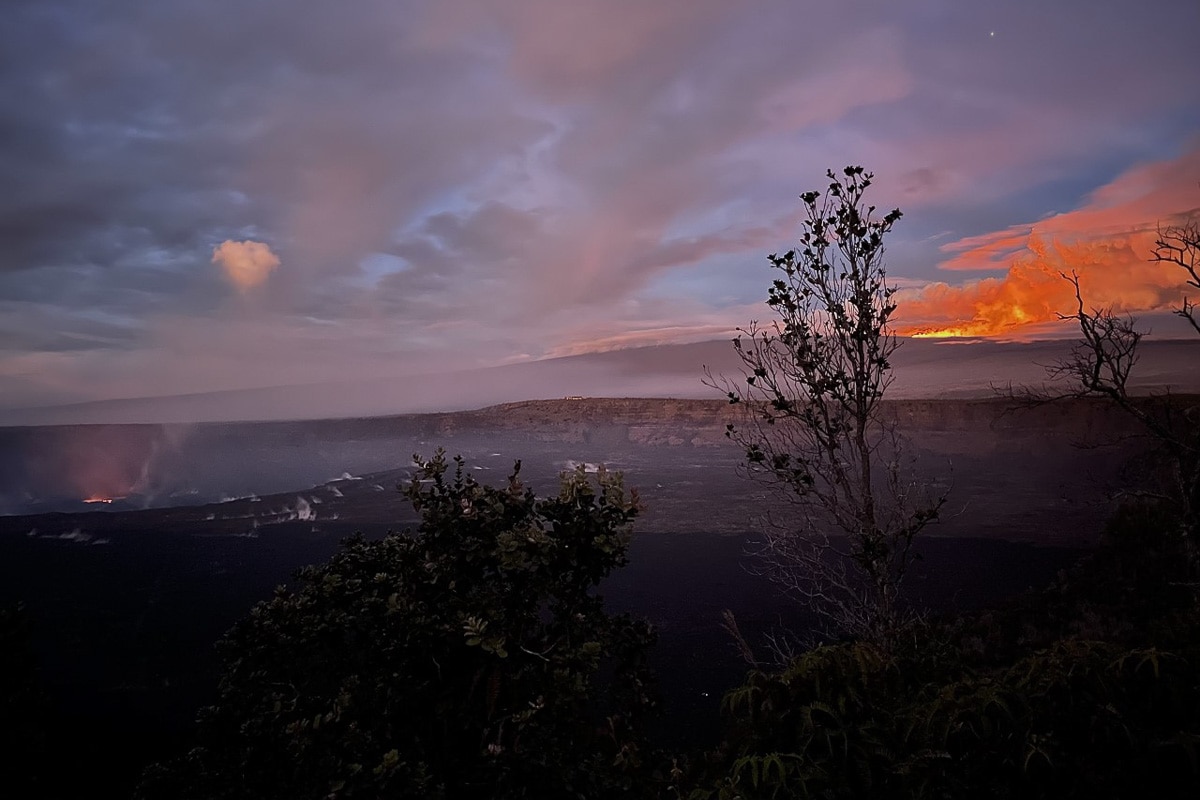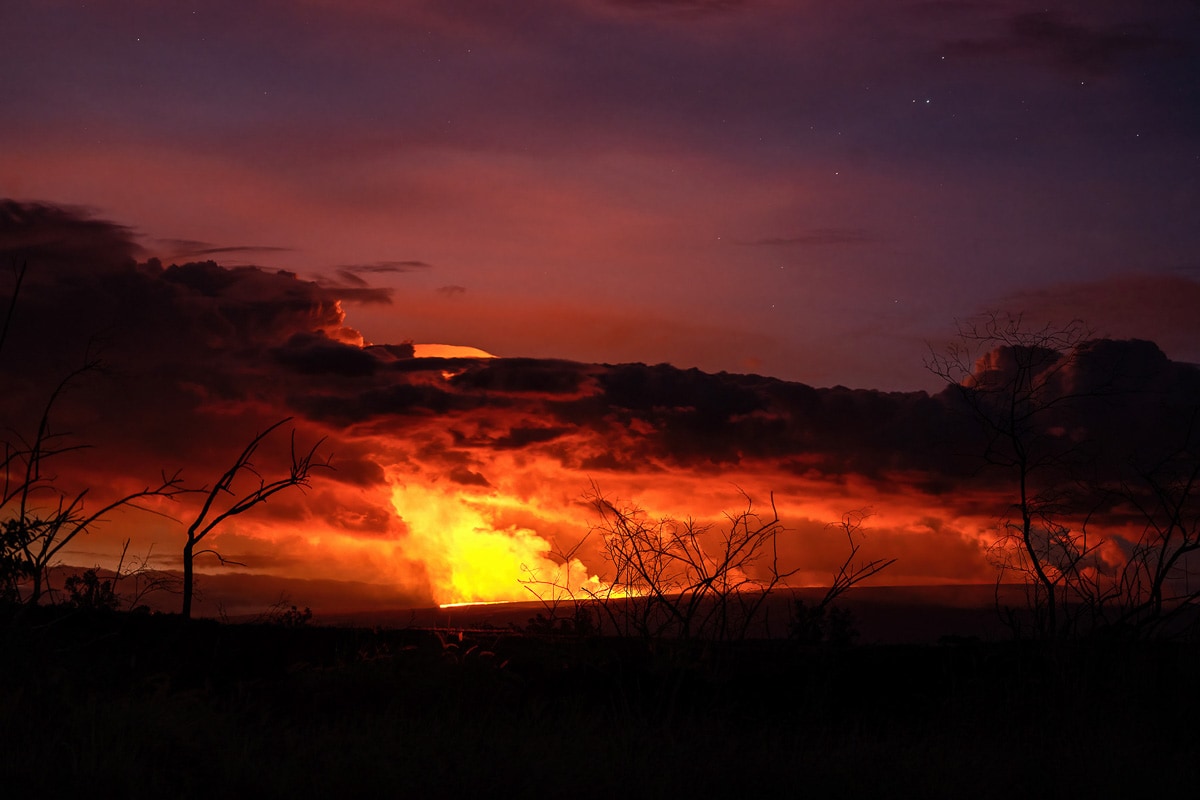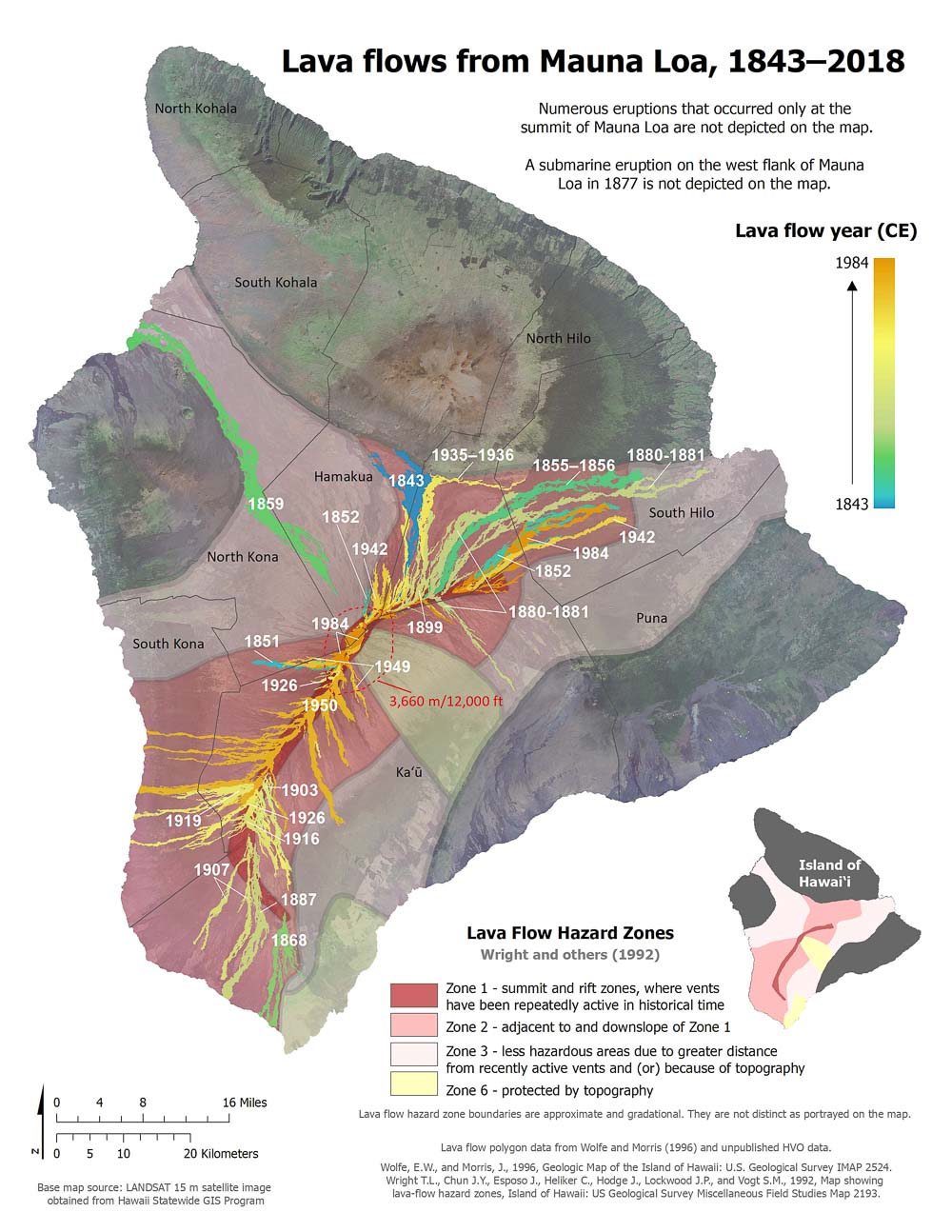This news story about the eruption of Mauna Loa in Hawai’i Volcanoes National Park is based on a November 28, 2022, press release by the National Park Service (NPS) and U.S. Geological Survey (USGS). You can read the original release here.
This past Sunday evening, mighty Mauna Loa in Hawai’i Volcanoes National Park woke up after almost four decades of dormancy.
At first the eruption was contained to the Moku‘āweoweo caldera at the summit, but now it has moved to the Northeast Rift Zone, according to the U.S. Geological Survey.
The eruption activity is being closely monitored by the relevant agencies. “Based on past events, the early stages of a Mauna Loa rift zone eruption can be very dynamic, and the location and advance of lava flows can change rapidly,” the Park Service said.

Hawai’i Volcanoes Mauna Loa Is Erupting for the First Time Since 1984
The last eruption of Mauna Loa, which is the largest active volcano in the world and makes up half of the Big Island of Hawai’i, took place in 1984. It’s also one of the world’s largest mountains, rising 30,000 feet from the bottom of the Pacific Ocean—taller than Mount Everest.
This new Mauna Loa eruption is expected to draw an influx of visitors to the park who hope to see a rare dual eruption from both the Kīlauea and Mauna Loa volcanoes, which are visible from a number of viewpoints in Hawai’i Volcanoes National Park.
Both volcanoes are the centerpieces and namesakes of Hawai’i Volcanoes National Park and it’s rare for them to erupt simultaneously.
Viewing areas along Kīlauea caldera before sunrise revealed a massive glow from Mauna Loa caldera, Mokuʻāweoweo (13,677 feet elevation), and a smaller lava lake within Halemaʻumaʻu (4,009 feet) at the summit of Kīlauea.
At this time, neither eruption in Hawai’i Volcanoes National Park is threatening homes or infrastructure, the Park Service said. Kīlauea has been erupting continuously since September 29, 2021, with lava confined to the summit lava lake.
Mauna Loa Eruption Video
If you can’t see this video, follow this link to the Hawai’i Volcanoes Flickr page.
What Is Open in Hawai’i Volcanoes National Park?
“Hawai’i Volcanoes National Park is keeping close watch on Mauna Loa in tandem with our colleagues at USGS and Hawaiʻi County Civil Defense,” said Hawai’i Volcanoes National Park Superintendent, Rhonda Loh. “The park is currently open, but visitors should be prepared and stay informed,” Loh said.
The park did, however, close Mauna Loa Road from the gate at Kīpukapuaulu to vehicles on Monday morning.
Cabins, high-elevation areas and the summit of Mauna Loa had already been closed to visitors since the beginning of October when the volcano started showing increased seismic activity.
The popular Mauna Loa Observatory Road, which is not within Hawai’i Volcanoes National Park, is also closed to the public.

Although there is no direct threat to residents or visitors, the National Park Service does urge everyone to check the park website for closure updates, safety alerts, air quality and other information.
Additional dangers associated with the eruption of Mauna Loa are volcanic gas, fine ash and Pele’s Hair (very thin volcanic glass fibers) that can be carried downwind, the U.S. Geological Survey said.
The USGS also said that “eruptions tend to produce voluminous, fast-moving lava flows that can impact communities on the east and west sides of the island. Mauna Loa eruptions typically start at the summit and, within minutes to months of eruption onset, can migrate into either the Northeast or Southwest Rift Zone, or radial vents on the north flank.”
The first well-documented eruption of Mauna Loa was in 1843. Since then, there have been no fewer than 33 eruptions with intervals that range from months to decades.

It’s been almost 40 years since the last Mauna Loa eruption in 1984, an unusually long period. That was also the last time both Mauna Loa and Kīlauea erupted at the same time, a rare geological spectacle that is now occurring once again.
- You can see Mauna Loa eruption updates here on the park’s website.
- For regular eruption status reports, visit the Hawaiian Volcano Observatory website.
- You can watch the Mauna Loa eruption live on these webcams.
